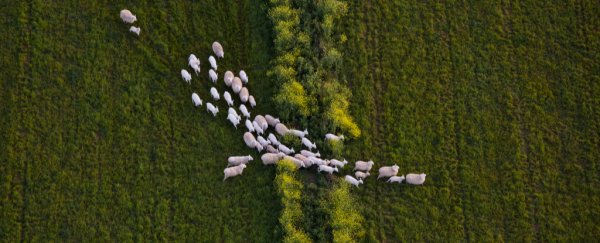A global pandemic is as good a time as any to reflect on where we as humans went wrong. Human impact on animal populations worldwide is a direct contributor to zoonotic disease spread, according to a timely new study.
The research has found our continued exploitation of the natural world - through hunting, trade, habitat degradation and urbanisation - has shifted mammal populations and led to a rise in infectious animal diseases that can spill over to humans.
It's all about proximity, and as human society continues to encroach upon the natural world, increased contact with wildlife has inevitably raised the risk of virus spillover.
"As natural habitat is diminished, wildlife come into closer contact with people. Wildlife also shift their distributions to accommodate anthropogenic activities and modification of the natural landscape," epidemiologist Christine Johnson from the University of California Davis told Newsweek.
"This has hastened disease emergence from wildlife and put us at risk of pandemics."
A reality the world now understands all too well. In the last century, infectious diseases from wildlife have been picking up steam, and the new results suggest the most abundant mammals are a big part of the problem.
By comparing data published up to 2013 on wild and domesticated mammals with viruses that can be passed to humans - called zoonotic viruses - the authors show which interactions put us most at risk.
In the end, there were three groups of animals that carried the greatest risk of spillover viruses. Unsurprisingly, domesticated animals, like livestock, shared the highest number of viruses with their human owners, eight times more so than their wild counterparts.
Of these wild creatures, ones that appeared to share the most viruses with humans were those that had increased in abundance and adapted to human-dominated environments - animals such as bats, rodents and primates.
That being said, even struggling species threatened by habitat loss or over-exploitation were predicted to host twice as many zoonotic viruses compared to those that were decreasing for other reasons. In short, when humans are around, there appears to be more risk of virus spillover. And, in all likelihood, we've been underestimating the true danger of this happening.
"While we shed light on the patterns of zoonotic viruses that have been reported up through the time of this study, we suspect that pathogen spillover often goes unnoticed, with only a proportion of spillover events expanding into outbreaks in people that are subsequently detectable," the authors write.
As of 2019, a quarter of the world's non-domesticated mammal species are threatened, according to the ICUN Red List. While urbanisation and human activity have certainly decreased the diversity of animals on Earth, some species have become enormously abundant, and these are usually the ones that adapt well to human behaviour, like mice.
"We need to be really attentive to how we interact with wildlife and the activities that bring humans and wildlife together," says Johnson.
"We obviously don't want pandemics of this scale. We need to find ways to co-exist safely with wildlife, as they have no shortages of viruses to give us."
The study was published in Proceedings of the Royal Society B: Biological Sciences.
